In the vast world of Italian cuisine, a number of chain restaurants stand out for all the wrong reasons. These establishments often promise authentic flavors and traditional Italian experiences but unfortunately fall short. The following list highlights 22 Italian chain restaurants that have become notorious for their lackluster dishes and uninspired menus.
Olive Garden
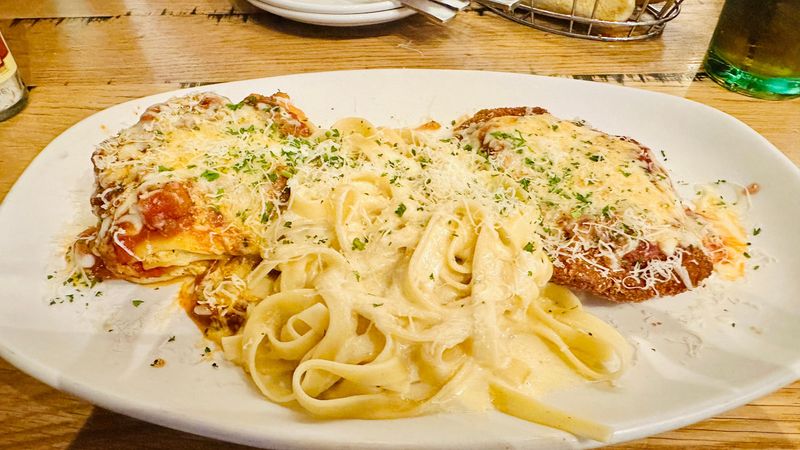
Known for its unlimited breadsticks, Olive Garden often disappoints with its main courses. Pasta dishes tend to be overcooked and drowned in sauce, masking any subtle flavors. Many find the food to be more Americanized than authentically Italian. Despite its popularity, it lacks the charm and taste of genuine Italian dining. The ambiance, though appealing to some, feels more like a generic chain than a cozy trattoria. Still, its affordability and familiarity keep customers returning.
Fun fact: Olive Garden was inspired by a trip to Italy but misses the mark on delivering true Italian delicacies.
Carrabba’s Italian Grill
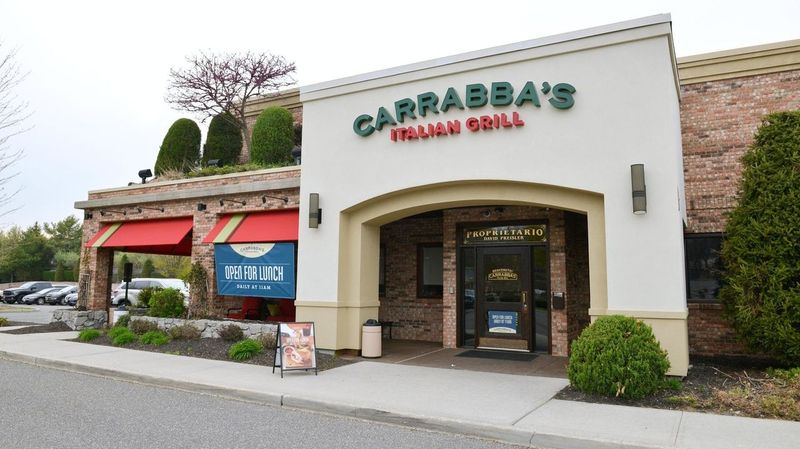
Carrabba’s Italian Grill attempts to offer a cozy, family-style dining atmosphere. However, the seafood often lacks freshness, and the flavors are inconsistent. This chain’s effort to blend Italian recipes with American tastes results in a confused menu. The interior design aims for warmth but can come off as dated. Diners seeking genuine Italian flavors might leave wanting more. Despite their extensive menu, many dishes lack the depth of traditional Italian cuisine.
Quirky detail: Carrabba’s originally started as a family-owned business in Texas.
Pizza Hut’s Italian Bistro

Pizza Hut’s attempt at an Italian Bistro experience feels like a fast-food interpretation of Italian dining. Pizzas often lack the essential toppings, and the crusts are more reminiscent of cardboard than dough. While they try to offer a step up from their standard fare, the dining experience remains basic. The ambiance mirrors a fast-food chain rather than an Italian pizzeria. Customers expecting a culinary journey might find themselves disappointed.
Interesting fact: Pizza Hut’s Italian Bistro concept was an effort to appeal to a more upscale market.
Maggiano’s Little Italy

Maggiano’s offers large portions meant for sharing, but quantity often trumps quality. The dishes, while visually impressive, lack the rich flavors one expects from Italian cuisine. The banquet-style dining can feel impersonal, losing the intimacy of a genuine Italian meal. Despite the grandeur, it doesn’t capture the essence of Italian culinary finesse. Many dishes feel generic, missing the authenticity diners crave.
Historic note: Maggiano’s aimed to recreate the atmosphere of 1940s Little Italy neighborhoods.
Fazoli’s
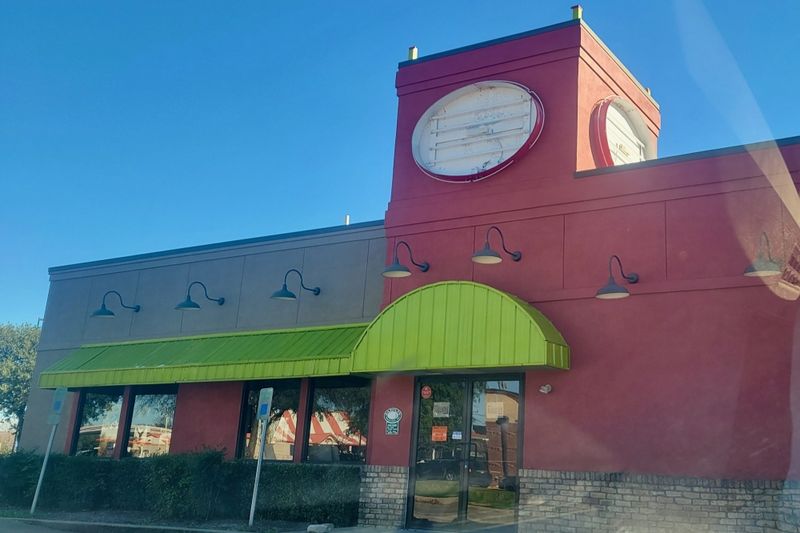
Fazoli’s markets itself as a fast-casual Italian option, but speed often comes at the expense of flavor. The pasta dishes are straightforward but fail to impress, often tasting bland. Their breadsticks, while popular, overshadow the main menu items. As a quick dining option, it lacks the heart and soul of Italian cooking. The sterile environment feels more like a cafeteria than a cozy eatery.
Did you know? Fazoli’s was one of the first Italian fast-food concepts in the U.S.
Macaroni Grill

Macaroni Grill tries to offer a semi-upscale Italian dining experience but often falls short. Chicken Parmesan, a staple, lacks the zest and warmth of its traditional counterpart. The interior, aiming for refinement, sometimes feels dated and uninspired. Their commitment to serving large portions doesn’t compensate for the lack of authentic taste. Diners might find the menu lacking genuine Italian flair despite its variety.
Curious fact: Macaroni Grill was inspired by Italian family gatherings but struggles to emulate that warmth.
Buca di Beppo
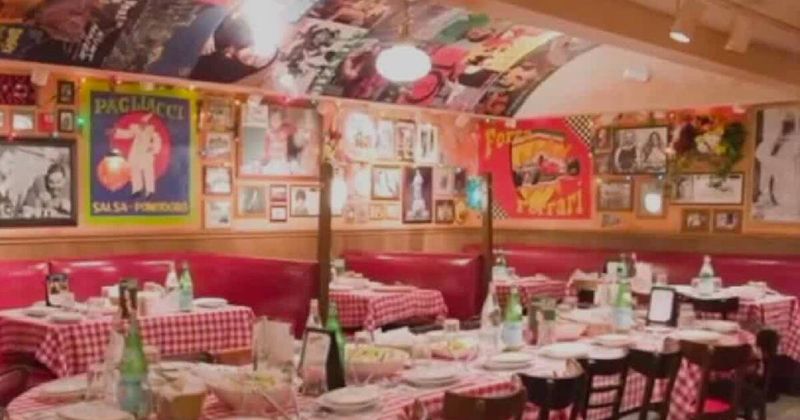
Buca di Beppo prides itself on family-style dining, but the experience can be overwhelming. The sheer volume of food often overshadows its quality, with dishes lacking distinct flavors. The cluttered ambiance, filled with vintage photos, feels chaotic rather than cozy. While the idea is to evoke Italian family gatherings, it sometimes misses the mark on taste and authenticity. Diners seeking a quieter, more refined experience might be disappointed.
Trivia: Buca di Beppo’s decor includes real photos from Italian-American families.
Bertucci’s
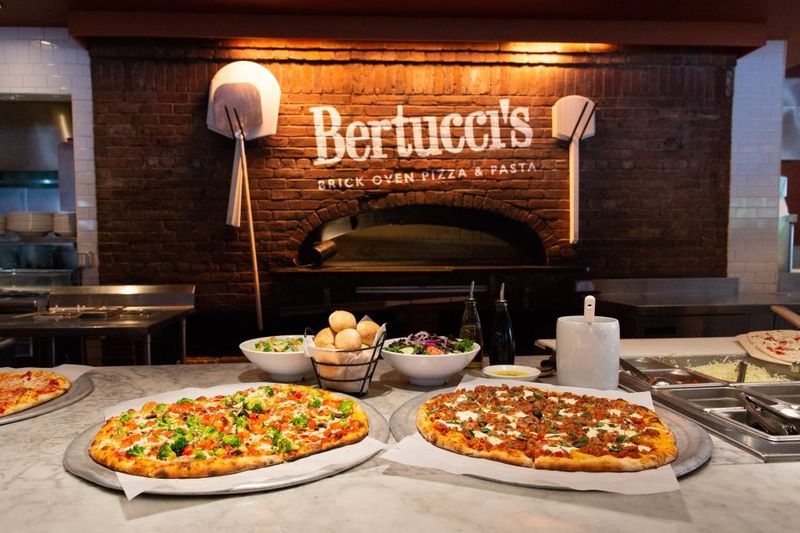
Bertucci’s is known for its wood-fired pizza, but execution often falters. Pizzas can emerge burnt or inconsistently cooked, detracting from what should be their highlight. The open-kitchen concept adds vibrancy but can also amplify the shortcomings. While they aim for a rustic feel, the flavors rarely reach the robust profile expected. The ambiance, though lively, sometimes lacks the warmth of a traditional Italian trattoria.
Cultural tidbit: Bertucci’s was one of the pioneers of open-kitchen dining in Italian chains.
Bravo! Cucina Italiana
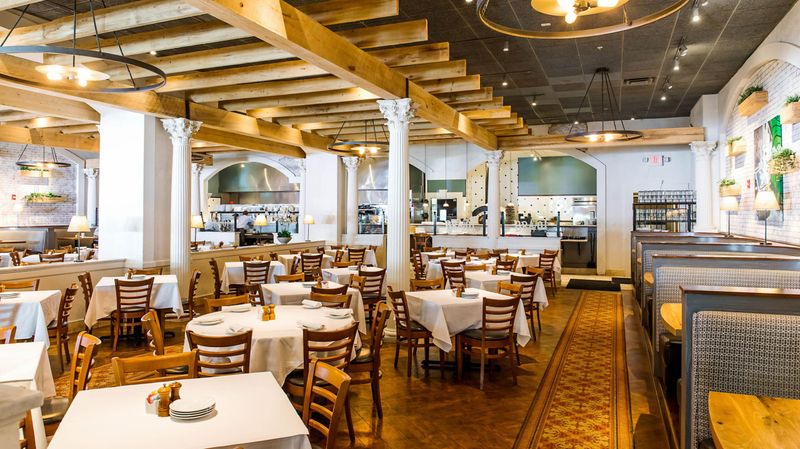
Bravo! Cucina Italiana attempts to blend contemporary dining with classic Italian recipes, yet often falls flat. The pasta, while plentiful, lacks the rich, comforting flavors that define Italian cuisine. The modern setting contrasts with the traditional dishes, creating a dissonant experience. While aiming for sophistication, the result can feel more corporate than cozy. Diners might leave feeling unsatisfied by the culinary journey.
Fact: Bravo! is part of a group of restaurants aiming to bring Italian dining to suburban areas.
T.G.I. Friday’s Italian
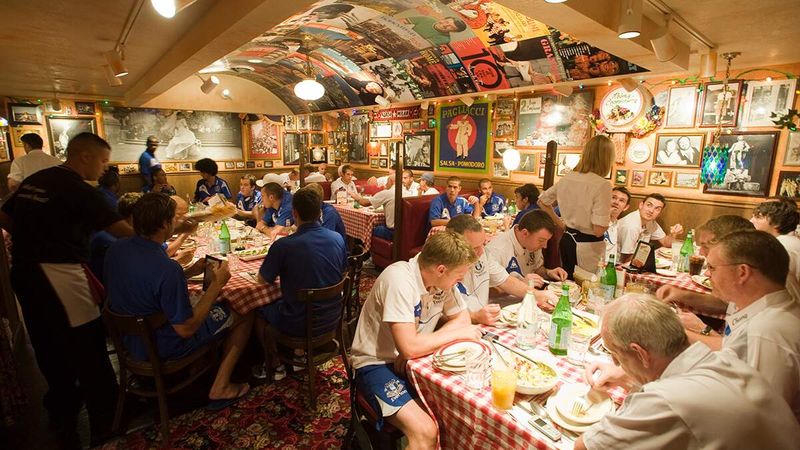
T.G.I. Friday’s, while primarily American, has an Italian section that fails to impress. The pasta dishes often feel like an afterthought, lacking authenticity and depth of flavor. The American-style decor clashes with the Italian menu, creating a confused atmosphere. While they offer variety, the execution rarely meets the expectations set by true Italian cuisine enthusiasts. Customers looking for genuine Italian experiences might look elsewhere.
Did you know? T.G.I. Friday’s was one of the first to introduce the casual dining concept.
Sbarro
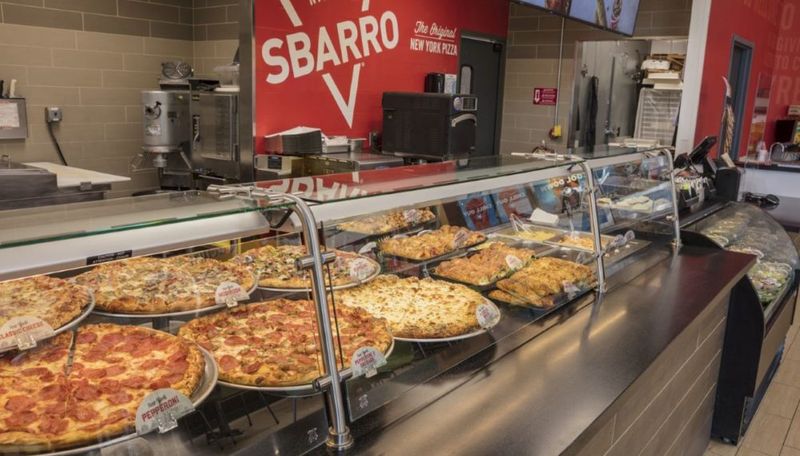
Sbarro, a staple in mall food courts, is synonymous with quick Italian eats. Unfortunately, the pizza often lacks flavor, with toppings skimpier than expected. While convenient, the food frequently feels generic, catering to the masses rather than true Italian aficionados. The environment, bustling with shoppers, lacks the leisurely Italian dining atmosphere. Despite its widespread presence, it seldom satisfies those craving authentic Italian pies.
Fun fact: Sbarro started as a salumeria in Brooklyn before expanding nationwide.
Cicis

Cicis is known for its pizza buffet, offering variety but often at the expense of quality. The pizzas, while numerous, can taste bland and uninspired. The bright, cafeteria-like setting detracts from any sense of Italian authenticity. Though it’s a family favorite for its affordability, it often misses the true essence of Italian flavors. Diners looking for depth and richness in their meals might be left wanting.
Trivia: Cicis was one of the first to offer an all-you-can-eat pizza buffet.
Johnny Carino’s

Johnny Carino’s aims to offer a homey Italian dining experience, yet struggles with execution. Spaghetti dishes, a staple, often lack the vibrant flavors expected from Italian cuisine. The dim lighting, intended to create ambiance, can sometimes feel dreary. Despite the extensive menu, many dishes fail to capture the authentic Italian taste. Guests seeking a comforting, rich meal might find themselves disappointed by the overall experience.
Did you know? Johnny Carino’s was inspired by the neighborhood bistros of Italy.
East Side Mario’s
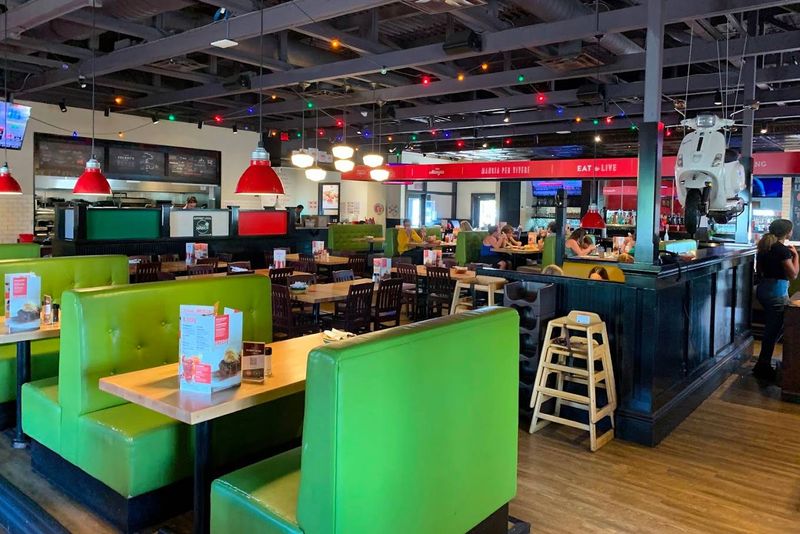
East Side Mario’s tries to recreate the charm of an Italian street café but often falters. The chaotic atmosphere, bustling with activity, can detract from the dining experience. Pizzas, a focal point, frequently lack the robust flavors diners crave. While aiming for an energetic ambiance, it can feel more chaotic than charming. Those seeking a peaceful, flavorful Italian meal might leave unsatisfied.
Curious fact: East Side Mario’s decor is inspired by New York’s Little Italy.
Pizza Express

Pizza Express endeavors to combine modernity with traditional Italian fare but often misses the mark. The pizzas, despite a range of topping options, can feel sparse and lack depth. The sleek, modern interior contrasts with the traditional dishes, sometimes creating a jarring experience. While aiming for a contemporary feel, it might not appeal to those seeking the warmth of a classic Italian eatery.
Fun tidbit: Pizza Express originated in London, aiming to bring Italian dining to the UK.
Spaghetti Warehouse

At Spaghetti Warehouse, the quirky decor, including an old trolley car, often overshadows the culinary offerings. Fettuccine Alfredo, a signature dish, can lack the creamy richness expected. The eclectic decor, while amusing, doesn’t compensate for the uninspired menu. Diners might find the environment entertaining, but those seeking authentic Italian flavors may be left unfulfilled.
Trivia: The Spaghetti Warehouse is known for its unique dining spaces, like trolley cars and antique settings.
Noodles & Company

Noodles & Company offers a variety of noodle dishes, but their Italian offerings can feel basic. Pasta bowls, while diverse, often miss the hearty flavors that define Italian cuisine. The minimalist approach, though efficient, lacks the warmth and depth of traditional Italian dining. While convenient, it doesn’t capture the essence of a true Italian meal. Diners looking for authentic tastes might find the options lacking.
Did you know? Noodles & Company serves a blend of international noodle dishes, including Italian.
Dolce Italian
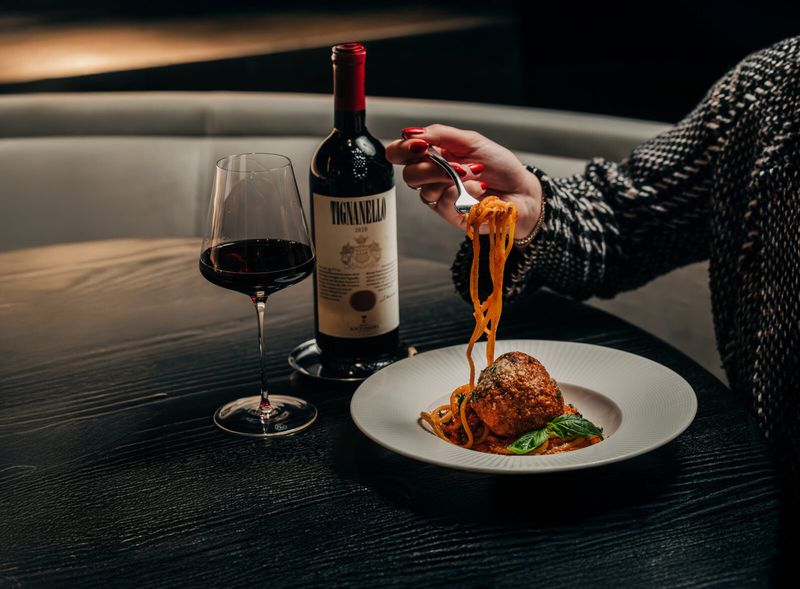
Dolce Italian aspires to offer a chic Italian dining experience but sometimes sacrifices flavor for style. An antipasto platter, meant to showcase Italian starters, can feel sparse and uninspired. The modern, upscale environment contrasts with the traditional Italian essence, creating a dissonant experience. While visually appealing, the dishes may leave diners craving more depth.
Interesting note: Dolce Italian was once named “Best New Restaurant” but has faced criticism over time.
Zoës Kitchen
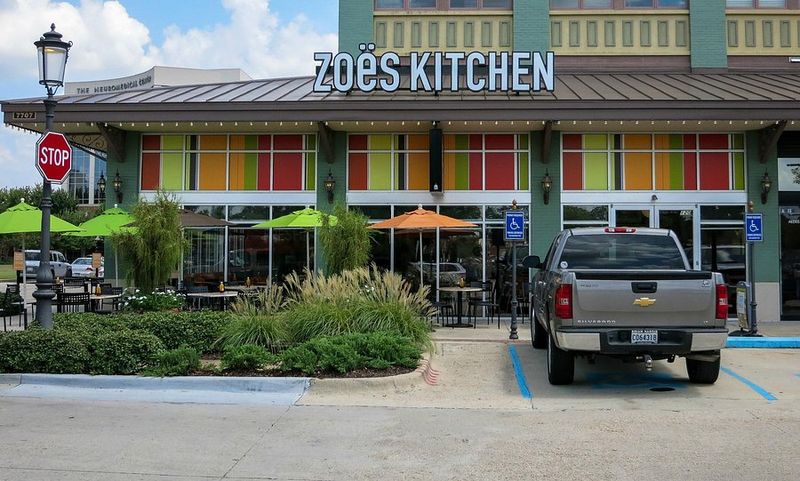
Zoës Kitchen, primarily known for Mediterranean cuisine, ventures into Italian but often lacks authenticity. Fusion dishes, while creative, can feel disjointed, missing the heart of Italian cooking. The bright, modern space, though inviting, doesn’t evoke the warmth of an Italian trattoria. Diners seeking true Italian flavors might find the offerings overly simplified and lacking in character.
Quirky fact: Zoës Kitchen’s menu is a blend of Mediterranean and Italian influences.
Il Fornaio
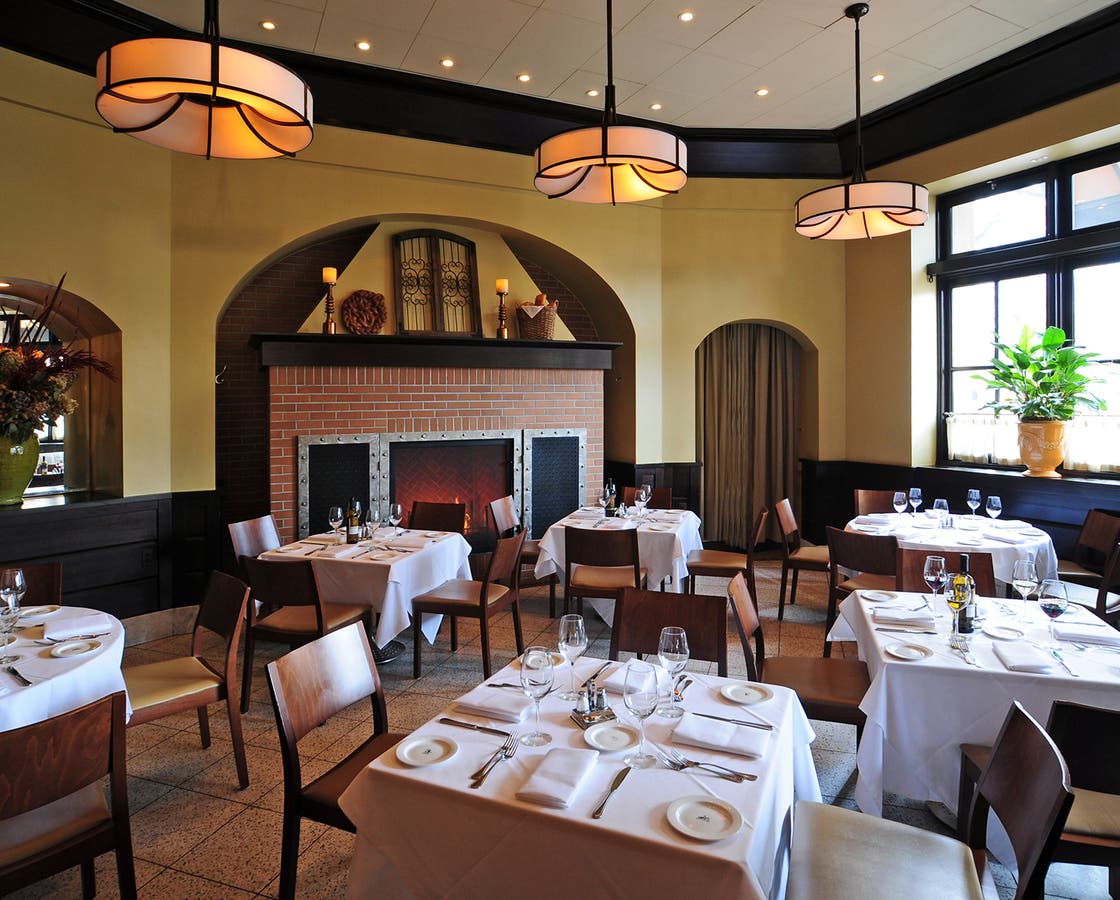
Il Fornaio aims to replicate the authentic Italian dining experience but sometimes oversimplifies. Bruschetta, a classic starter, can lack the vibrant flavors and fresh ingredients expected. The warm lighting and cozy decor create ambiance but don’t always compensate for the uninspired dishes. While striving for authenticity, the execution occasionally falls flat, leaving diners wanting more.
Cultural insight: Il Fornaio began as a bakery before expanding into full-service restaurants.
Romano’s Macaroni Grill
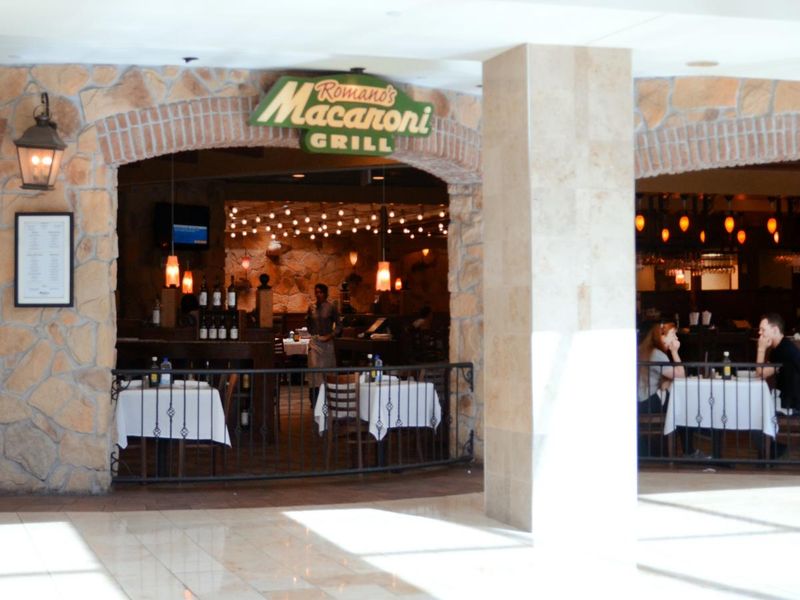
Romano’s Macaroni Grill tries to blend rustic charm with Italian cuisine but sometimes misses the mark. Penne dishes, though ample, often lack the bold flavors signature to Italian cooking. The rustic setting, while inviting, can feel more corporate than cozy. Diners might appreciate the ambiance but find the culinary offerings underwhelming. Despite the effort, it often leaves guests yearning for genuine Italian subtleties.
Factoid: Romano’s is known for their open kitchens, aiming to showcase culinary craftsmanship.
Brio Tuscan Grille

Brio Tuscan Grille tries to evoke the elegance of Tuscan dining but often lacks the rich flavors to match. Pasta dishes, while elegantly presented, frequently miss the vibrant taste of Tuscan ingredients. The sophisticated decor, with elegant light fixtures, creates atmosphere but doesn’t always translate to the plate. While visually appealing, the experience can feel lacking in culinary authenticity.
Trivia: Brio aims to bring Tuscan cuisine to American suburbs but sometimes loses authenticity along the way.
Leave a comment